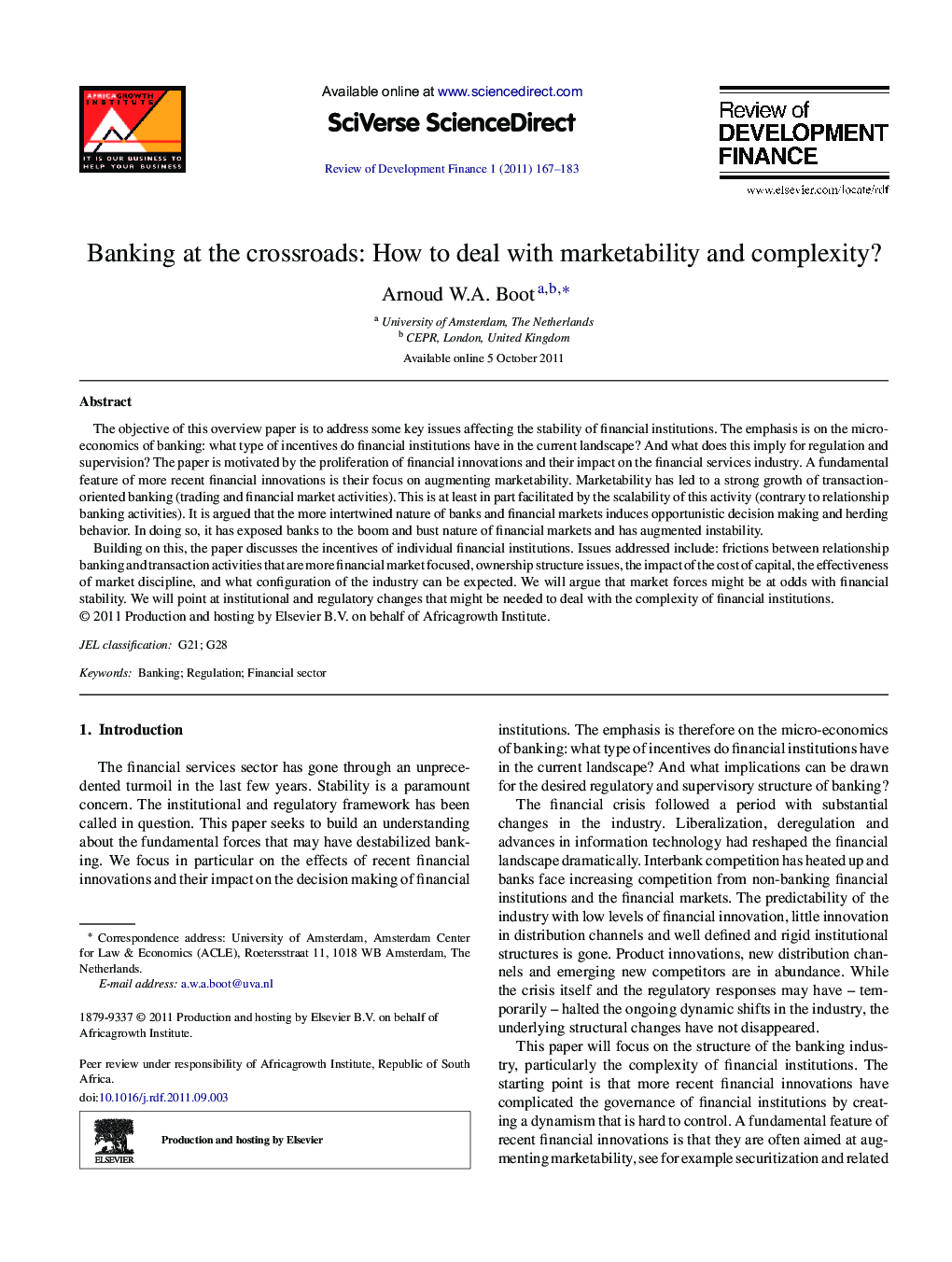| Article ID | Journal | Published Year | Pages | File Type |
|---|---|---|---|---|
| 986615 | Review of Development Finance | 2011 | 17 Pages |
The objective of this overview paper is to address some key issues affecting the stability of financial institutions. The emphasis is on the micro-economics of banking: what type of incentives do financial institutions have in the current landscape? And what does this imply for regulation and supervision? The paper is motivated by the proliferation of financial innovations and their impact on the financial services industry. A fundamental feature of more recent financial innovations is their focus on augmenting marketability. Marketability has led to a strong growth of transaction-oriented banking (trading and financial market activities). This is at least in part facilitated by the scalability of this activity (contrary to relationship banking activities). It is argued that the more intertwined nature of banks and financial markets induces opportunistic decision making and herding behavior. In doing so, it has exposed banks to the boom and bust nature of financial markets and has augmented instability.Building on this, the paper discusses the incentives of individual financial institutions. Issues addressed include: frictions between relationship banking and transaction activities that are more financial market focused, ownership structure issues, the impact of the cost of capital, the effectiveness of market discipline, and what configuration of the industry can be expected. We will argue that market forces might be at odds with financial stability. We will point at institutional and regulatory changes that might be needed to deal with the complexity of financial institutions.
